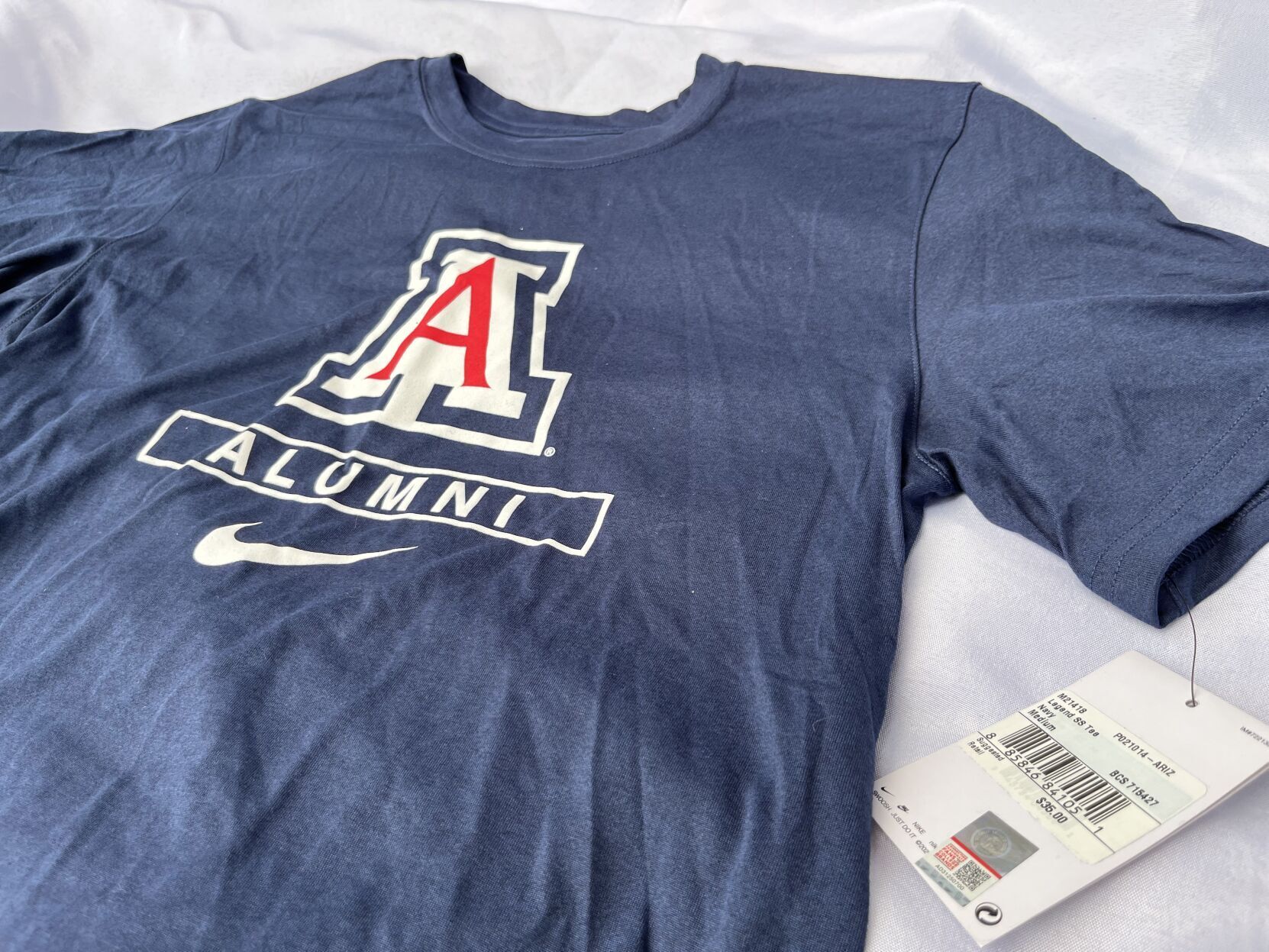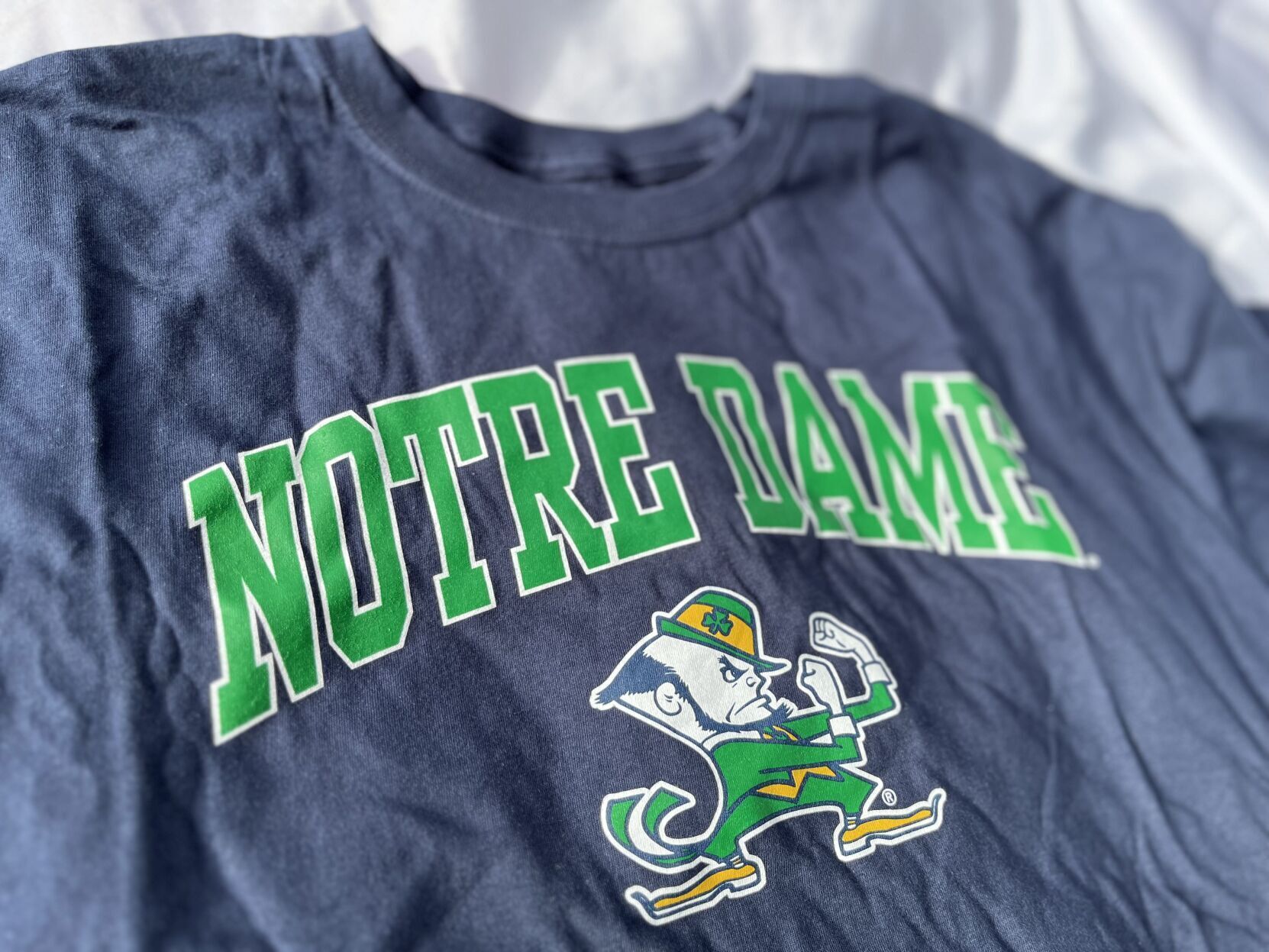Welcome to DU!
The truly grassroots left-of-center political community where regular people, not algorithms, drive the discussions and set the standards.
Join the community:
Create a free account
Support DU (and get rid of ads!):
Become a Star Member
Latest Breaking News
Editorials & Other Articles
General Discussion
The DU Lounge
All Forums
Issue Forums
Culture Forums
Alliance Forums
Region Forums
Support Forums
Help & Search
Economy
Related: About this forumBroken threads: College clothing made in factories rife with labor violations, poverty wages
ALERT TOP STORY
Broken threads: College clothing made in factories rife with labor violations, poverty wages
HAYLEIGH COLOMBO Oct 26, 2023 Updated 1 hr ago
College apparel represents a multi-billion-dollar industry. Buying a $35 shirt allows you to blend into a sea of fellow fans on game day. But underneath the surface lies a harsh reality behind how that $35 shirt made it onto store shelves. ... Dimas Misael Cardona Bahr works nine-hour days in a Honduras factory, churning out Nike-branded university logo apparel that’s eventually shipped to the United States. ... The college football fans who buy it pay more for a single T-shirt than he makes in a day. ... He flinched at the $35 price tag for a polyester University of Arizona alumni Nike T-shirt that his factory helped produce, as he recounted his struggle to afford a modest lifestyle for his wife and two young children on his weekly salary of about 2,400 Honduran lempira - the equivalent of $97. That's slightly below what the Global Living Wage Coalition considers to be a living wage in Honduras.

This $35 Nike T-shirt featuring the University of Arizona logo likely resulted in no more than 21 cents for the garment worker who made it.
“Everything that we have to do, what the struggle is for us in a week, it does not seem fair,” Cardona Bahr, who works in the factory’s ironing press room on upwards of 750 shirts per day, said through an interpreter who works with labor advocates in Honduras. Those advocates put Lee Enterprises in touch with Cardona Bahr. “The truth is no, it is not enough money to really maintain a home. Our salaries are low. We aren’t able to cover all of our expenses with this salary.” ... Cardona Bahr and the nearly 1,500 workers at that factory, Southern Apparel Contractors, are one piece of the global supply chain that fuels the estimated $5 billion licensed collegiate apparel business. U.S. universities earn millions each year in royalty revenue from sales of licensed gear, though it represents a small percentage of the schools’ overall revenue.
Top schools like Ohio State University and the University of Alabama pulled in nearly $14 million and $12 million, respectively, last year alone from royalties. Other Division I schools like the University of Nebraska and the University of Wisconsin-Madison made more than $3.5 million each. ... Worker advocates and apparel industry experts say universities - especially public colleges funded by taxpayers - could do more to protect workers in a system that prioritizes profits. ... “At the end of the day, it has their name on it,” said Mark Anner, a labor and employment relations professor at Penn State and founding director of the Center for Global Workers’ Rights. “They have a lot of leverage.”
{snip}

This $21.99 Fanatics-branded University of Notre Dame shirt was made in Nicaragua.
{snip}
A $59.99 University of Missouri sweatshirt made in El Salvador resulted in a single worker’s pay of no more than 36 cents. The university pulled in more than $1.8 million in royalties last year. ... A $35 University of North Carolina Nike T-shirt made in El Salvador resulted in 21 cents for a garment worker, while the university made $4.6 million in royalties last year. ... For a $25.99 Honduran-made Oklahoma State University T-shirt, a garment worker made 16 cents. ... The Auburn Tigers T-shirt selling for $24.99? Fifteen cents.
{snip}
Hayleigh Colombo is a member of the Lee Enterprises Public Service Journalism Team. Kimberly Wethal, Brendan Denison, Timothy Stanley and Faith Redd contributed to this report.
Broken threads: College clothing made in factories rife with labor violations, poverty wages
HAYLEIGH COLOMBO Oct 26, 2023 Updated 1 hr ago
College apparel represents a multi-billion-dollar industry. Buying a $35 shirt allows you to blend into a sea of fellow fans on game day. But underneath the surface lies a harsh reality behind how that $35 shirt made it onto store shelves. ... Dimas Misael Cardona Bahr works nine-hour days in a Honduras factory, churning out Nike-branded university logo apparel that’s eventually shipped to the United States. ... The college football fans who buy it pay more for a single T-shirt than he makes in a day. ... He flinched at the $35 price tag for a polyester University of Arizona alumni Nike T-shirt that his factory helped produce, as he recounted his struggle to afford a modest lifestyle for his wife and two young children on his weekly salary of about 2,400 Honduran lempira - the equivalent of $97. That's slightly below what the Global Living Wage Coalition considers to be a living wage in Honduras.

This $35 Nike T-shirt featuring the University of Arizona logo likely resulted in no more than 21 cents for the garment worker who made it.
“Everything that we have to do, what the struggle is for us in a week, it does not seem fair,” Cardona Bahr, who works in the factory’s ironing press room on upwards of 750 shirts per day, said through an interpreter who works with labor advocates in Honduras. Those advocates put Lee Enterprises in touch with Cardona Bahr. “The truth is no, it is not enough money to really maintain a home. Our salaries are low. We aren’t able to cover all of our expenses with this salary.” ... Cardona Bahr and the nearly 1,500 workers at that factory, Southern Apparel Contractors, are one piece of the global supply chain that fuels the estimated $5 billion licensed collegiate apparel business. U.S. universities earn millions each year in royalty revenue from sales of licensed gear, though it represents a small percentage of the schools’ overall revenue.
Top schools like Ohio State University and the University of Alabama pulled in nearly $14 million and $12 million, respectively, last year alone from royalties. Other Division I schools like the University of Nebraska and the University of Wisconsin-Madison made more than $3.5 million each. ... Worker advocates and apparel industry experts say universities - especially public colleges funded by taxpayers - could do more to protect workers in a system that prioritizes profits. ... “At the end of the day, it has their name on it,” said Mark Anner, a labor and employment relations professor at Penn State and founding director of the Center for Global Workers’ Rights. “They have a lot of leverage.”
{snip}

This $21.99 Fanatics-branded University of Notre Dame shirt was made in Nicaragua.
{snip}
A $59.99 University of Missouri sweatshirt made in El Salvador resulted in a single worker’s pay of no more than 36 cents. The university pulled in more than $1.8 million in royalties last year. ... A $35 University of North Carolina Nike T-shirt made in El Salvador resulted in 21 cents for a garment worker, while the university made $4.6 million in royalties last year. ... For a $25.99 Honduran-made Oklahoma State University T-shirt, a garment worker made 16 cents. ... The Auburn Tigers T-shirt selling for $24.99? Fifteen cents.
{snip}
Hayleigh Colombo is a member of the Lee Enterprises Public Service Journalism Team. Kimberly Wethal, Brendan Denison, Timothy Stanley and Faith Redd contributed to this report.
1 replies
 = new reply since forum marked as read
Highlight:
NoneDon't highlight anything
5 newestHighlight 5 most recent replies
= new reply since forum marked as read
Highlight:
NoneDon't highlight anything
5 newestHighlight 5 most recent replies
Broken threads: College clothing made in factories rife with labor violations, poverty wages (Original Post)
mahatmakanejeeves
Oct 2023
OP
MutantAndProud
(855 posts)1. Producers have known for decades
None of them have done a single thing, it appears brand owners have resigned to and accepted the concept of abuse as part of the local and global supply chain